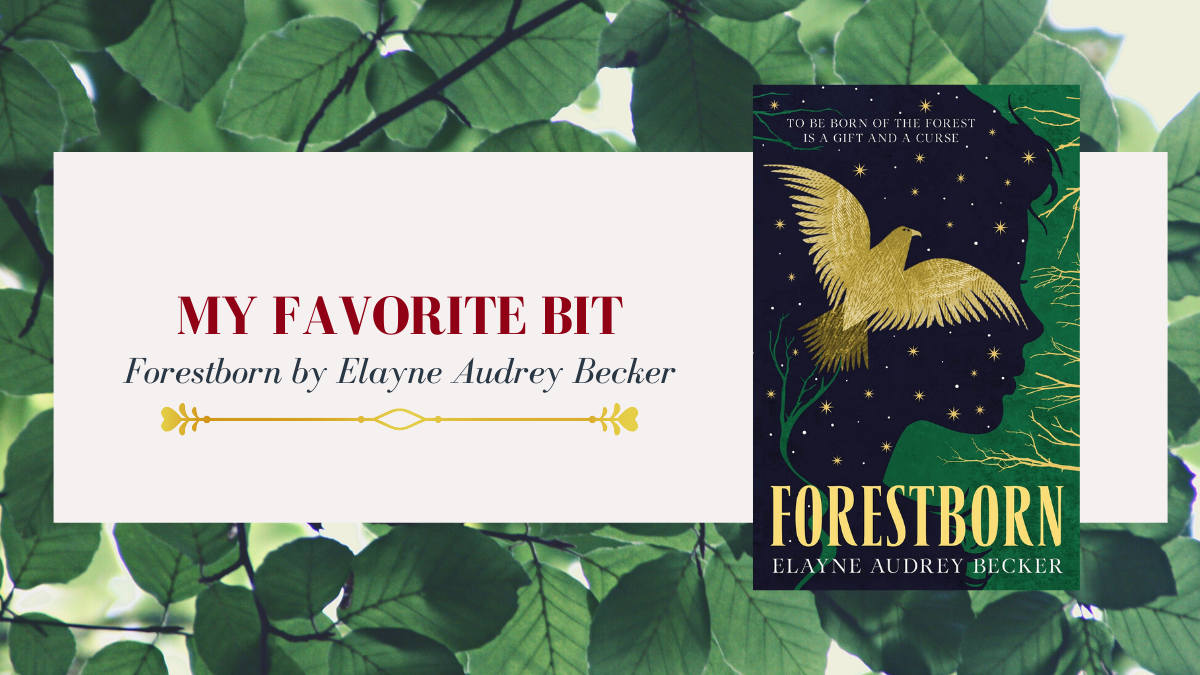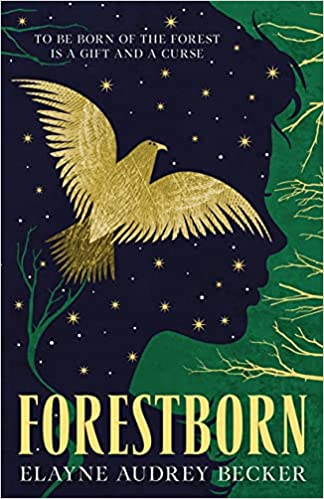
Elayne Audrey Becker is joining us today to talk about her novel, Forestborn. Here’s the publisher’s description:
A young, orphaned shapeshifter in a world that fears magic must risk everything if she hopes to save her only friend in Elayne Audrey Becker’s Forestborn, first in a new fantasy series with a timeless feel.
TO BE BORN OF THE FOREST IS A GIFT AND A CURSE.Rora is a shifter, as magical as all those born in the wilderness—and as feared. She uses her abilities to spy for the king, traveling under different guises and listening for signs of trouble.
When a magical illness surfaces across the kingdom, Rora uncovers a devastating truth: Finley, the young prince and her best friend, has caught it, too. His only hope is stardust, the rarest of magical elements, found deep in the wilderness where Rora grew up—and to which she swore never to return.
But for her only friend, Rora will face her past and brave the dark, magical wood, journeying with her brother and the obstinate, older prince who insists on coming. Together, they must survive sentient forests and creatures unknown, battling an ever-changing landscape while escaping human pursuers who want them dead. With illness gripping the kingdom and war on the horizon, Finley’s is not the only life that hangs in the balance.
What’s Elayne’s favorite bit?

ELAYNE AUDREY BECKER
Creating my own take on shapeshifting
The night I decided to write a novel about shapeshifters, one of the first questions that came to mind was, will they be able to shift into people or animals? Typically, it’s one or the other.
After a few hours of agonized toggling back and forth—which to choose?—I realized it was my story, and therefore I could do whatever I wanted. So I chose both, and I’m so glad I did.
Shapeshifting has always fascinated me as a form of magic. I think that interest stems, at least in part, from my love of animals; a deep appreciation for wildlife was ingrained in me at a young age, and I’ve carried that with me throughout my life. Yes, the idea of changing my appearance into a different person’s is certainly intriguing, but to change into an animal, a different species entirely? That interests me just as much, if not more so, and being able to translate that excitement into a fantasy world of my own has brought me a lot of joy.
In Forestborn, the protagonist, Rora, and her brother, Helos, are shifters. Within this world’s magic system, that means they have the ability to assume the form of any person they’ve seen before. They also gain three animal forms throughout their lifetimes, though they cannot control or predict which animals these will be; while they have the ability to change their human features all their lives, their animal forms are born only from a moment of greatest need, recognized as such by instinct. In other words, their bodies decide their animal forms for them. From that point on, whenever a shifter feels the emotions that triggered each animal in the first place, they’ll also feel a compulsion to shift into that form.
By the time the novel opens, Rora has already gained all three of her animal forms: lynx, mouse, and goshawk. In the story, each holds a special significance in Rora’s life—the lynx to fight and defend herself, the mouse to hide, the goshawk to flee. Behind the scenes, these animals were not random selections; I put a lot of thought into choosing just the right three for her.
Rora’s animal forms all manifested during her childhood in the Western Vale, a magical wilderness whose topography, flora, and fauna were inspired by those of North America’s Rocky Mountain region. As such, I needed to choose three animals which make their home among the Rockies. If they were creatures of the forest, all the better. Because Rora has felt alone for most of her life, I wanted the two forms in which she feels most comfortable to be solitary animals. Finally, I wanted at least one nocturnal animal, since I associate a lot of night imagery with Rora; she often studies the night sky, she finds the dark comforting, and I derived her name from the Aurora Borealis.
These strands coalesced into the lynx, goshawk, and mouse. Once I settled this question, I wanted to make sure her POV when she’s in these forms would reflect the way the animals’ real-life counterparts engage with their surroundings. So while her human shifts required no research to write, I spent a while researching how the lynx, goshawk, and mouse move about the world—mainly their range of body language, how they hunt, how they fight, the senses on which they rely, their habitat, and physical appearance.
For example, Rora’s lynx is technically a Canada lynx, which is one of four lynx species alongside the Eurasian lynx, the Iberian lynx, and the bobcat. Canada lynxes have amazing eyesight and excellent hearing; by comparison, their sense of smell is relatively weak. The way this makes it into the book is that when Rora is in lynx form, she describes her surroundings in terms of their sights and sounds more often than their scents. Similarly, when she has to defend herself or others in lynx form, she fights as a Canada lynx does—rolling onto her back and kicking with her hind legs, in addition to biting and striking out with her paws. If she’s feeling threatened, her ears may lay flat against her head, her bobbed tail may brush out, or her coat may bristle. (A coat that’s reddish-brown with flecks of gray and cream; the book takes place in summer, and the Canada lynx’s coat doesn’t turn gray until winter.)
The mouse, which is technically a deer mouse, provides a similar example. Mice have poor eyesight; they rely instead on their senses of hearing and smell, as well as their whiskers’ ability to translate vibrations in the air into information regarding their surroundings. In contrast to the lynx, then, the scenes in which Rora is in mouse form include fewer concrete visual descriptions of the spaces she occupies than the rest of the narrative. She also uses her whiskers to help assemble a rough picture of what’s taking place around her.
As a final example, the goshawk is Rora’s favorite form. On the ground, she is subject to a net of suspicion and unwarranted bias against shifters like her, but in the sky, she is unbeatable. Goshawks are an apex predator, built for maneuvering through forests with astonishing ability. Because of this elevation in status, power, and relative freedom from threats, readers may notice she not only experiences the world through a goshawk’s eyes in these sections, but also experiences an emotional shift—an uptick in joy and a slight loosening of the tethers encasing her heart.
I could talk a lot more about fun research facts, or how rewarding it was for me to create my own take on shapeshifting in Forestborn. For now, I’ll simply wrap this up by saying that it ended up being one of my favorite elements in the book. And the moments I learn my magic system resonates with a reader make it all the sweeter.
LINKS:
Forestborn Universal Book Link
BIO:
ELAYNE AUDREY BECKER (she/her) is a storyteller with a passion
for history, myth, mountains, and magic. She holds a B.A. from Vassar
College and a master of science from the University of Aberdeen, and
she has worked as an editor at a New York publisher. Born and raised
in Georgia, she grew up with a lake and woods as her backyard,
spending long days outside and visiting national parks with her
family. Forestborn is her first book.
